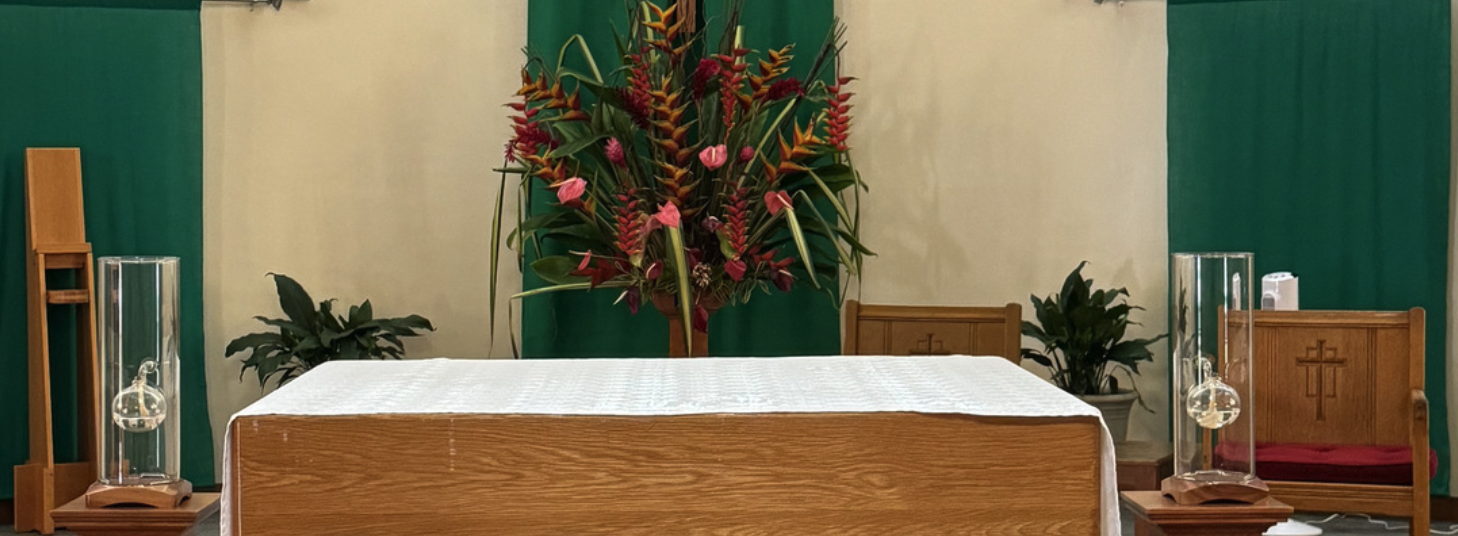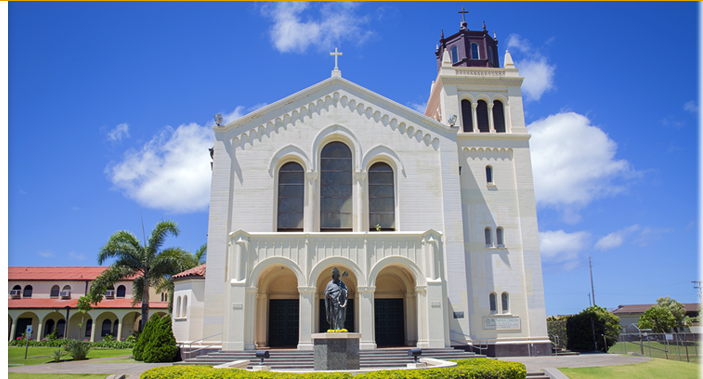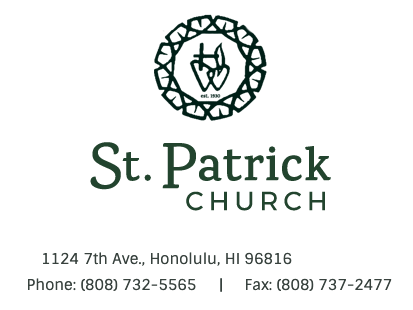/Screenshot%202025-04-01%20at%201_20_44%E2%80%AFPM.png)
UP COMING EVENTS

- March 24th & 27th: Neocatechumenal Communities at Church Meeting Room- 7PM
- March 28th: Stations of the Cross at Saint Patrick's Church- 6PM
- March 31~April 2nd: Parish Lenten Retreat (6:30Pm~7:30PM) at Saint Patrick`s Church
- April 4th: First Friday Adoration after the 7AM Mass until 4PM
- April 6th - Family Rosary at St. Patrick School Cafeteria. After 11 AM Mass.
- April 11th - Mimes: Stations of the Cross at St. Patrick Church 8AM School & 6PM -Public
HISTORY & MISSION
History and Mission
Saint Patrick Church History
In the early 1900’s the population of Honolulu expanded beyond Kewalo, Punchbowl, Kalihi and Kaimuki areas. The Catholics of Kaimuki attended mass in the convent chapel of the Sisters of the Sacred Hearts on Waialae Avenue. However, by 1917, this became too small for the growing population. The Chaplin of the Sisters’ Convent, Father Patrick St. Leger ss. cc. decided it was time to build a church for the Catholics in Kaimuki. He started the plans for the new building but could not complete the work because of poor health.
Father Athanasius Bous ss.cc took on the task of the new church with energy! The Catholics of Kaimuki generously contributed to the building fund. The new church was consecrated by Bishop Alencastre on February 10, 1929 and named St. Patrick, after its first pastor.
Church Mission
We, the members of St. Patrick Church, through the baptism of Jesus Christ, are a believing and loving community committed to living the Gospel of Jesus Christ. Based on that love and commitment and with the help of the Holy Spirit, we will:
Celebrate our faith as a community of believers through
worship, prayers, and communal action
Strengthen our knowledge and love of the Gospel of Jesus Christ
Foster a welcoming environment that encourages communication within our parish ‘ohana
Invite and encourage each parishioner to share ideas, gifts, and talents
Reach out to the needs of our community.
Congregation of the Sacred Hearts
Congregation of the Sacred Hearts of Jesus and Mary
History: In the beginning 1800
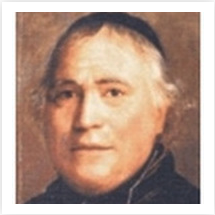
In some countries our Congregation is known by the name "Picpus", after rue de Picpus, the street where our central house was established shortly after the community's foundation. The French provincial house of the Sisters is still in that house, as well as a community of Brothers.
On Christmas day 2000 the Congregation celebrated its two hundredth anniversary. The Congregation wants to unite itself to the whole Church in this new Millennium, seeing this as an important time of personal renewal.
The Congregation was founded in 1800 by Pierre Coudrin and Henriette Aymer de la Chevalrie during the French revolution, when people were living in misery and the Church was being persecuted.
The Good Father Pierre Coudrin
In a Church in constant conflict with French political authority during the final years of the eighteenth century, Father Pierre Coudrin was before all else a pastor. His burning zeal for the coming of the Kingdom, his untiring dedication to the direct service of souls, his daring clandestine ministry during a time of persecution were things that defined his personality and the community that he would found.
The mystical grace that he receives in hiding in the loft of the Motte, gives his priesthood the perspective of spreading the Gospel even to the most remote islands. Going out of the grain loft, he kneels at the foot of a holm oak tree and vows to “suffer everything, to give himself to God. to die if necessary in his service.” And already he sees himself with many brothers and sisters. The pastor is becoming a founder.
Convinced of being part of the mysterious plan of God and attentive to the signs of God’s action he finds in the Society of the Sacred Heart a group of women who were looking for something more and who are already leading a sort of religious life. It is there that he meets Henriette Aymer. United in giving themselves to the Sacred Hearts, the community grows, centered in the Gospel and the redemptive love of God manifested in the pierced Heart of Christ.
Once he takes his vows on Christmas 1800, the now Father Marie Joseph is at the service of this work of God. He no longer thinks just of himself. Along with his service to the community, he also exercises the pastoral ministry as vicar in different dioceses (Tours, Sées, Troyes, Rouen, etc.). He also desires to bring to reality the dream of missions in far off islands. The two loves of his heart are the service of the Church and the expansion of his Congregation. His visits, letters, counsel and love accompany the rapid growth of the Congregation. The man from the country becomes the leader of a brotherhood with all its different people and circumstances. Everyone knew that he was really “the Good Father.”
The Good Mother Henriette Aymer
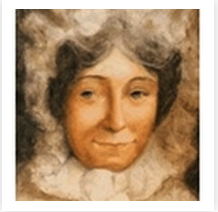
"Consecration to the Sacred Hearts is the foundation of our institute."
Living in French society in the later years of the “Ancien Regime”, Henriette receives an education in the religious values of the French tradition and the somewhat superficial formation considered appropriate for a woman.
She experiences the impact of social and religious persecution. Seeking meaning for her life, after encountering God in prison, she is led to the Society of the Sacred Heart, to Father Coudrin, her guide and to the group of “Solitaries” with whom she will begin to journey. This is the first nucleus of the Congregation.
From that time on she gives herself to forming the Congregation. Around her gather the Solitaries and other women who are looking for an opportunity to consecrate themselves after the destruction of religious life during the terror. Her innate gift for leadership allows her to grow into a foundress and even more, a mother. Her goodness along with a strong, lively and sensible character made her mother and foundress in the sisters’ branch as it grew rapidly in those first years.
One of the dilemmas we find in the life of “the Good Mother” is the conjunction of aspects that are seemingly contradictory. Her deep mystical life led her to spend hours in adoration, in continual union with God and to the experience of mystical phenomena that she herself was unable to explain but which Father Coudrin took advantage of to know the plan of God for the young Congregation. Joined to her mystical side was tireless activity. She made more than twenty foundations in different parts of France, attended to the sisters’ formation and supported the superiors she appointed to local communities.
Henriette had the practical responsibility for all the material aspects of both branches. She was a true mother in her love and her concern for all. And we must also mention the incomprehensible need she felt to do penance that today we would consider excessive. Add to that her travel and long hours of night adoration, the life of the Good Mother is ”a constant miracle,” as the Good Father said.
Her correspondence with both brothers and sisters, her short “messages” for the Good Father, what we call her “billets,” and the witness of those who knew her, speak to us a strong and sensitive personality, a woman of action and also deep feeling, a woman with common sense who was also a see contemplative like the great mystics. She was a complex and rich woman of God and mother of the Congregation of the Sacred Hearts.
